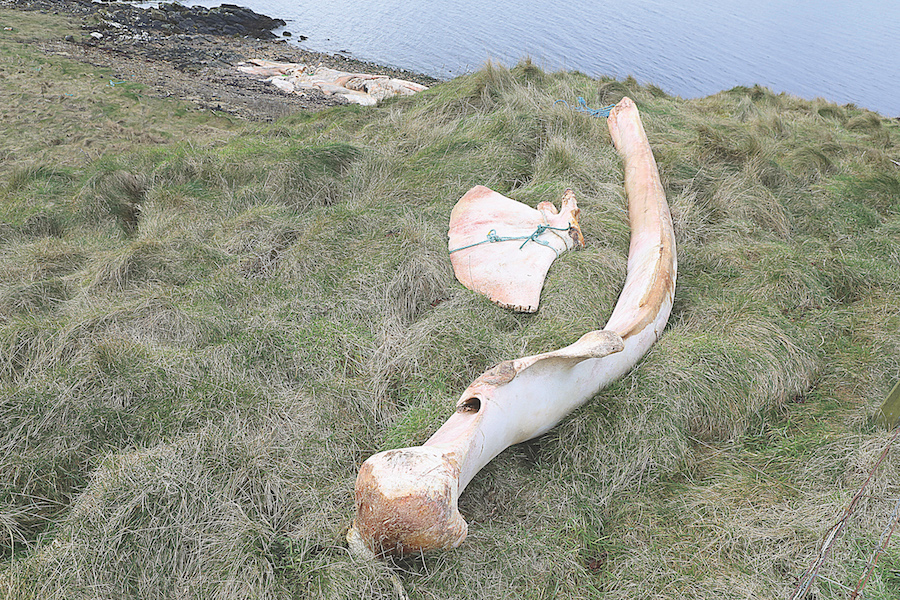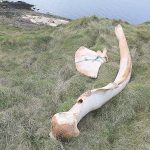

Burray fin whale saga resurfaces after bones removed from carcass

The tale of the Burray fin-whale which caused a stir and a stink last year has resurfaced this week, as removal of some of the bones prompted fresh debate over legality.
Burray’s Magnus Spence, who towed the decomposing whale ashore last year, has been removing bones from the carcass, fearing they will be washed away without intervention.
He hopes that the bones can be used for some sort of monument in the community — akin to the Birsay whalebone — but when a picture appeared online showing some bones had been extracted, a debate began to emerge over the legality of bone salvaging without a license.
Further questions were raised over the Norse-originating Udal Law, and if whales — being over 25ft — actually belong to Her Majesty The Queen.
But it is, in fact, a “grey area,” according to former Sanday ranger, and representative of the British Divers Marine Life Rescue (BDMLR), Emma Neave-Webb.
Mr Spence helped to tow the whale to shore in July last year, after the carcass was deemed a potential sea hazard, left decomposing in the water near the third Churchill barrier. Mr Spence is set to own the land near Echnaloch Bay, where the whale now rests.
He said: “We’ve been pulling them out and setting them aside, so that the sea doesn’t get them.
“As soon as there were bones becoming exposed, we just started cutting them out and pulling them up the shore, so there was something left of the whale for the future.
“The Burray Community Association might want to do something with them, build a whalebone arch or something somewhere. You never know
what somebody might want to do with them. It would be such a shame to just let them go back to the sea.”
Referencing the whalebone at the Broch of Birsay, Mr Spence said: “There’s a record up there of a whale coming ashore, so maybe the Burray community would like to create one down here too.”
So far, he has preserved two jaw-bones, two shoulder blades and some of the whales baleen.
“It was quite surprising the weight that was in them,” he added.
Describing the baleen up close, he explained it comprises separate “blades” of about eight to ten inches long, and six inches wide, and what looks like “great big fingernails with fur on the end of them.”
Mr Spence said he has been waiting for the bones to become exposed by decomposition, so they’re easily accessible, before removing them.
He also wishes to make it clear that he is laying no claim to the bones whatsoever — his intention is merely to save them from being washed back out to sea.
While Mr Spence himself acknowledges the potential need for a license in order to remove the bones, he says he is “not in the slightest” bit worried about it.
Meanwhile, Emma Neave-Webb, volunteer science and conservation officer with the Orkney Marine Mammal Research Initiative, said: “It’s a really, really tricky one, because in the eyes of the law, you’re not meant to have it and you’re not meant to do it.
“But, at the same time, I can absolutely understand why people do, particularly up here in Orkney.”
Full story and more pictures in this week’s The Orcadian, now available online or in local shops.